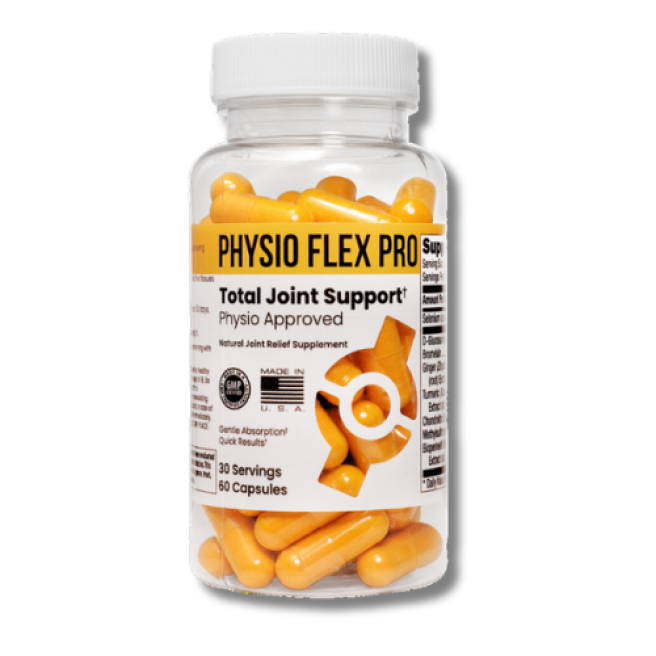Joint hypermobility causes an unusually large range of movement for your joints, which can hinder carrying out basic daily living tasks, so it’s important to have it diagnosed and treated early. One such diagnostic test for hypermobility is the Beighton score, which measures joint flexibility.
But how does the Beighton score system work?
What Is Joint Hypermobility?
Joint hypermobility syndrome is a genetic condition when a person has extreme flexibility, pain, and other symptoms in the joints, tendons, muscles, and cartilage. Symptoms of hypermobility include:
- Frequent joint and ligament injuries (e.g., dislocations and sprains)
- Stiffness in the joints and muscles
- Thin, stretchy skin
- Constant fatigue
- Dizziness
- Fainting
- Poor balance
- Bladder and bowel problems
The exact cause of joint hypermobility isn’t known, but it’s often hereditary. One probable cause, according to scientists, is ligamentous laxity, which is inherent in a person's makeup and is determined by their fibrous protein genes, such as collagen, elastin, and fibrillin. Collagen, in particular, is the protein that adds flexibility and strength to your joints, ligaments, and tendons.
What Is The Beighton Score?
Beighton score is a test that detects joint hypermobility syndrome. It consists of simple movements that involve the joint angle to measure the flexibility of certain joints.
The Beighton score uses a nine-point scoring system – the higher your score, the more flexible your joints are.
The Beighton score test examines the following joints:
- Elbows
- Knees
- Knuckles of pinky fingers
- Spine
- The base of the thumbs
Many healthy people have hyper-flexible joints, but joint hypermobility syndrome could result from various underlying conditions. A positive Beighton score means you likely have joint hypermobility syndrome. Joint hypermobility syndrome may indicate other health problems that need further testing.
Who Should You Get Tested for Hypermobility?
Getting tested for hypermobility might be necessary if a person:
- Is easily fatigued, even after rest
- Keeps feeling pain and stiffness in your joints or muscles
- Often gets sprained and strained in the joints
- Experiences dislocation
- Often lose their balance
If you experience any of these symptoms, consult a physiotherapist, occupational therapist, or podiatrist for specialist advice.
How Is The Beighton Score Calculated?
The Beighton Score is a 9-point scale requiring 5 maneuvers, four passive bilateral, and one active unilateral performance. The presiding healthcare provider will ask you to move your joints into certain positions. You may have to lie down or sit in a chair to perform the maneuvers.
|
|
LEFT |
RIGHT |
|
1. Passive dorsiflexion and hyperextension of the fifth MCP joint beyond 90° - This step involves bending the little (pinky) finger up at 90° to the back of your hand |
1 |
1 |
|
2. Passive apposition of the thumb to the flexor aspect of the forearm - The doctor bends the thumb back on the front of the forearm |
1 |
1 |
|
3. Passive hyperextension of the elbow beyond 10° - The elbows are then bent backward |
1 |
1 |
|
4. Passive hyperextension of the knee beyond 10° - The knees are bent backward |
1 |
1 |
|
5. Active forward flexion of the trunk with the knees fully extended so that the palms of the hands rest flat on the floor - The hands should be placed flat on the floor with straight knees. |
1 |
1 |
|
TOTAL |
/ 9 |
|
How To Perform The Exercises Required For The Beighton Score Test
1. Passive dorsiflexion and hyperextension of the fifth MCP joint beyond 90°

2. Passive apposition of the thumb to the flexor aspect of the forearm

3. Passive hyperextension of the elbow beyond 10°

4. Passive hyperextension of the knee beyond 10°

5. Active forward flexion of the trunk with the knees fully extended so that the palms of the hands rest flat on the floor

In the absence of a healthcare provider, you can perform the Beighton score procedures at home.
The first four procedures can be given a maximum score of 2 because these are performed bilaterally, while the last is scored with 0 or 1. The maximum score for ligament laxity is 9, which means a state of hyperlaxity while scoring zero is tight. Overall, adults who score 5/9 or higher and pre-pubertal children who score 6/9 or higher are considered to have general joint hypermobility.
Certain factors may also change or influence one’s Beighton score. Studies have shown that factors like stretching and warming up before the procedures can increase the joint’s range of motion. Temperature can also affect the flexibility of tendons and ligaments and ultimately influence joint range of motion. For women, hormonal fluctuations during their menstrual cycle can also affect knee laxity.
Scientific Validity and Reliability of the Beighton Score
So far, many experts agree that the Beighton score is a highly reliable clinical tool that shows substantial results when used by raters of variable backgrounds and experience levels. The Beighton scoring system showed a sensitivity of 0.8% and a specificity of 99.3% through a binary logistic regression model and a cut-off of ⩾4.
However, it must be noted the Beighton score does not measure the degree of hypermobility in each joint; it only assigns a positive score if the joint’s range of motion passes the required threshold. Therefore, joints presenting with borderline hypermobility are left open to interpretation on its scoring by different examiners or on different occasions. As mentioned, factors like temperature, prior physical activity, and menstrual cycles (for women) may also influence results.
There is limited intensive research available, so it’s impossible to conclude whether other tools are more or less reliable compared to the Beighton score or valid in comparison to it. Ultimately, further research is required to quantify the validity and reliability of the Beighton score and other scoring systems.
Treatment Methods for Hypermobility
Currently, there is no established treatment method to fully cure joint hypermobility syndrome. But some methods can help ease symptoms:
Physical Therapy
Physical therapists can prescribe exercise methods/therapies that can help reduce pain and the risk of dislocations, improve posture and balance, and improve overall muscle strength and fitness. For example, exercising the core, back, and glutes helps stabilize the hip joint, reduce pain, and prevent injuries, while exercises using resistance bands/loops can benefit the knee joints.
Taking Painkillers
Non-steroidal anti-inflammatory drugs (NSAIDs) such as ibuprofen may help relieve joint hypermobility pain. These are also available as gels or sprays that can be applied directly to the affected joints.
Other Home Remedies
Heat can relieve joint pain. You can warm baths or apply hot compresses to the affected areas. You can repeat the methods as needed.
You can also opt for supportive shoes with special insoles (orthotics) upon the recommendation of a podiatrist.
FAQs
1. What are the symptoms of hypermobility?
Symptoms of hypermobility include frequent joint and ligament dislocations and sprains, stiffness, thin, stretchy skin, constant fatigue, dizziness, poor balance, and bladder and bowel problems.
2. How is hypermobility treated?
The Beighton score may determine a person’s hypermobility. While there is no exact cure for joint hypermobility, healthcare providers may employ physical therapy, painkillers, and other DIY recommendations/lifestyle changes to help relieve and manage joint hypermobility symptoms.
3. Can you develop hypermobility, or is it genetic?
Joint hypermobility is often hereditary. One probable cause, according to scientists, is thought to be genetically determined changes to fibrous protein genes, such as collagen, elastin, and fibrillin, which all contribute to strengthening the joints, ligaments, and tendons.
4. What is the difference between hypermobility and Ehlers-Danlos syndrome?
Hypermobility and Ehlers-Danios syndrome are similar conditions. But Ehlers-Danlos syndrome (EDS) is a group of rare inherited conditions that affect connective tissues – counting to about 13 types.
EDS also has more varied symptoms, so a person may experience problems caused by hypermobility but do not have any specific EDS conditions.
Conclusion
The Beighton score is a simple diagnostic test that determines the flexibility of the joints. The higher the score you get, the more flexible your joints are. While it’s a reliable tool for diagnosing hypermobility, factors like temperature and earlier physical activities can influence the score.
If you think you have hypermobile joints, consult a trusted healthcare provider (physical/occupational therapist or podiatrist) to guide you through proper treatment methods.






